Do you cover meatloaf when baking? This seemingly simple question sparks a wide range of opinions among home cooks and professional chefs. Meatloaf remains a classic comfort food staple and is beloved by many for its nostalgic qualities and adaptability. However, achieving the perfect balance of a moist interior while keeping a delicious, slightly crispy crust on the outside can be challenging. One key aspect that may impact the final result is whether or not to cover the meatloaf during baking. Some say covering the dish while baking helps keep the meatloaf moist, while others argue that leaving it uncovered allows for a crisp, flavorful crust. So, which method is the best?
In this article, we will explore the different techniques and discuss their effects on the final product, helping you decide which approach aligns with your preferences and yields the ideal meatloaf that brings warmth and comfort to your dinner table.
What Temperature To Bake Meatloaf At?
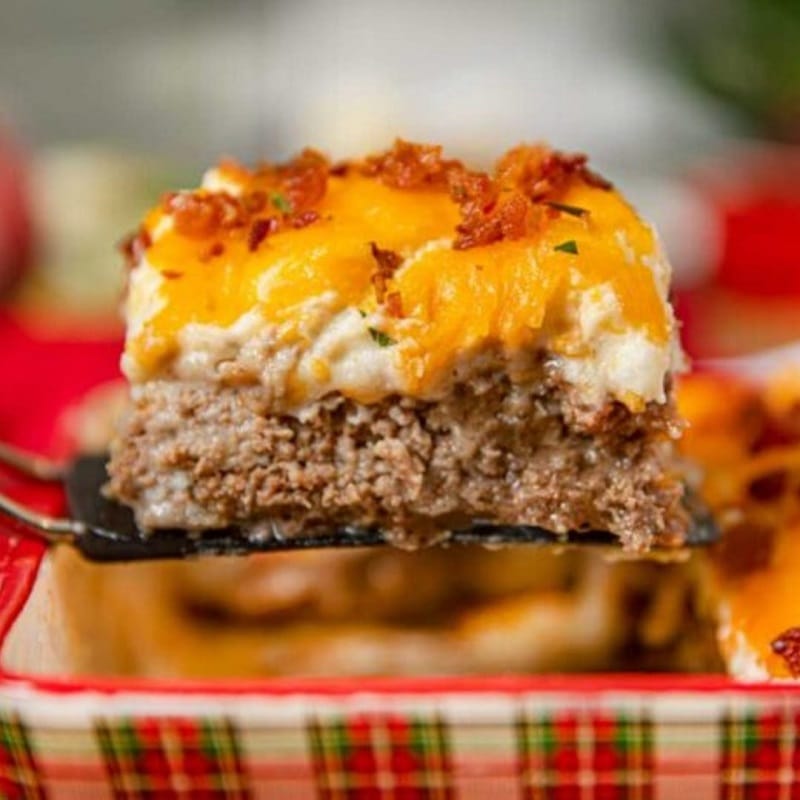
When it comes to baking meatloaf, there are a variety of temperatures and cooking times to consider. However, as a general rule of thumb, it is recommended to bake meatloaf at a temperature of no higher than 350 degrees Fahrenheit. This allows the meat to cook evenly without drying out, resulting in a delicious, moist meatloaf.
Depending on the size of the loaf, cooking times may vary, but a standard cooking temperature for meatloaf is 350°F, cooking for about 35 to 45 minutes per pound in a conventional oven. It is important to ensure that the internal temperature of the meatloaf reaches 160°F to ensure that it is fully cooked.
Do You Cover Meatloaf When Baking?
When baking meatloaf, many wonder whether they should cover it or leave it uncovered. Covering the meatloaf can result in a moister and more flavorful loaf as it prevents the top from drying out. However, it is important not to keep it covered for the entire cooking process. The recommended approach is to cover the meatloaf with foil for the first 45 minutes of baking to ensure it doesn’t dry out and then uncover it for the last 15 minutes to allow it to brown.
It is also recommended to use milk in the mixture when making meatloaf to keep it moist. Ultimately, the choice to cover the meatloaf or not depends on personal preference for the type of crust desired.
When Should You Avoid Covering Your Meatloaf?
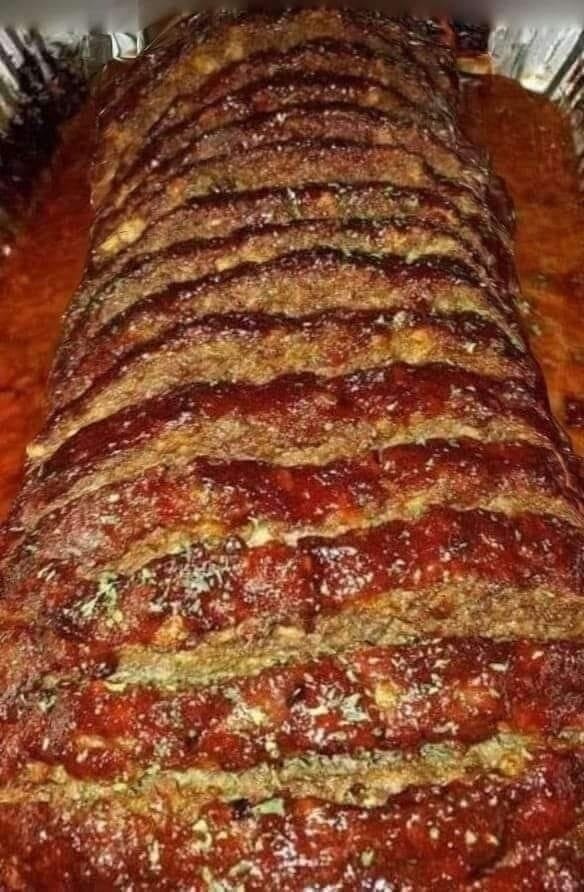
As someone who has made a lot of meatloaf in my time, I can tell you that covering your meatloaf while it cooks is not always necessary. There are times when you should avoid covering it altogether.
First and foremost, let’s talk about why you might cover your meatloaf. Covering your meatloaf while it cooks can help to keep it moist and prevent it from drying out. This is especially true if you cook your meatloaf in a dry oven or use leaner meat like ground turkey or chicken.
However, there are times when covering your meatloaf can do more harm than good. For example, if you’re using a recipe that calls for a glaze or topping on your meatloaf, covering it can cause the glaze or topping to become too wet and soggy. This will not only affect the texture of your meatloaf but also prevent the glaze or topping from caramelizing properly.
Another reason to avoid covering your meatloaf is if you’re using a meat thermometer to check the internal temperature. If you cover your meatloaf, you won’t be able to see the thermometer, and you won’t be able to tell when your meatloaf is fully cooked. This can result in undercooked or overcooked meatloaf, neither of which is desirable.
So, when should you cover your meatloaf? It depends on the recipe you’re using and your personal preference. If you’re using a recipe that calls for covering your meatloaf, then you should follow that recipe. However, if you’re not using a recipe or making adjustments to a recipe, you should consider whether or not covering your meatloaf is necessary.
Related Reading:
How To Cover Meatloaf For Baking
I’ve learned that covering meatloaf for baking is essential to achieving a moist and flavorful result. Here’s how I cover my meatloaf for baking:
- Prepare your meatloaf according to your recipe. I mix ground beef, breadcrumbs, eggs, and seasonings in a bowl.
- Place your meatloaf mixture into a loaf pan. I prefer a metal loaf pan because it helps the meatloaf cook evenly.
- Now it’s time to cover the meatloaf. First, I lay a piece of aluminum foil over the top of the meatloaf. I make sure to cover it completely so that no air can escape.
- Next, I tuck the edges of the foil down around the sides of the loaf pan. This helps to keep the foil in place while the meatloaf bakes.
- Finally, I place the covered meatloaf in the oven and bake it according to my recipe’s instructions. The foil will help to trap moisture inside the pan, resulting in a juicy and tender meatloaf.
Covering your meatloaf for baking is a simple and effective way to ensure it turns out moist and delicious. Tuck aluminum foil around the pan’s edges, and let it bake perfectly.
How Can You Tell If Meatloaf Is Fully Cooked?
As someone who loves to cook, I understand that one of the biggest challenges in cooking meatloaf is determining whether or not it’s fully cooked. It’s not like a steak that can be cooked to your desired level of doneness; meatloaf needs to be cooked all the way through to ensure it’s safe to eat. Here, I’ll share some tips on telling if meatloaf is fully cooked.
First, the most reliable way to tell if meatloaf is fully cooked is by using a meat thermometer. You can purchase a meat thermometer for relatively cheap at your local grocery store or online. To use a meat thermometer, insert it into the thickest part of the meatloaf, ensuring not to touch the bottom of the pan. The temperature should read 160°F (71°C) for beef and 165°F (74°C) for poultry.
Another way to tell if meatloaf is fully cooked is by looking at the color. If the meatloaf is still pink or has any pink juices coming out, it’s not fully cooked. Once the meatloaf is fully cooked, the juices should be clear, and the color should be brown throughout.
Lastly, you can tell if the meatloaf is fully cooked using the touch test. Use your finger to press on the center of the meatloaf gently. If it springs back, it’s fully cooked. It must cook longer if it feels mushy or your finger leaves an indentation.
In conclusion, there are several ways to tell if meatloaf is fully cooked. The most reliable way is using a meat thermometer, but you can also look at the color and use the touch test. No matter which method you choose, properly cook your meatloaf to ensure it’s safe.
What Are The Potential Consequences Of Not Covering Meatloaf When Baking?
Have you ever wondered what would happen if you didn’t cover your meatloaf while baking it? The potential consequences might surprise you.
Firstly, not covering your meatloaf while baking can lead to dryness. Without a cover, the moisture in the meatloaf evaporates quickly, and the meatloaf ends up dry and tough. No one wants to eat meatloaf that’s akin to a piece of cardboard.
Secondly, not covering your meatloaf can also cause it to cook unevenly. The bottom and sides of the meatloaf will cook faster than the top, resulting in an unevenly cooked meatloaf. This can be particularly problematic if you use ingredients like vegetables or cheese that could burn on the top before the meat is fully cooked.
Finally, not covering your meatloaf can also lead to a mess in your oven. As the meatloaf cooks, the juices and fat can spatter and splatter. If you don’t have a cover on the meatloaf, these juices can land on the bottom of your oven and cause smoke or even a fire.
How Does Covering Meatloaf Affect The Cooking Process?
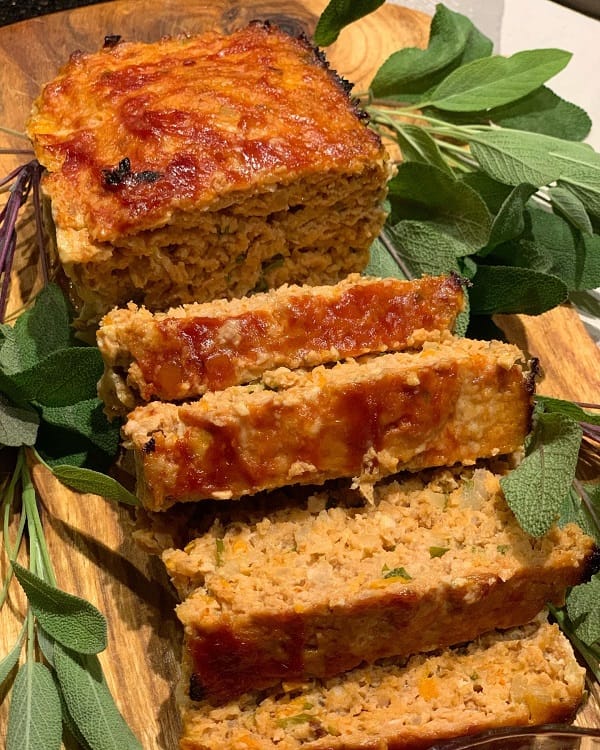
I have always been curious about the effects of covering meatloaf during cooking. Does it make a difference? After conducting my experiments and researching the topic, I have come to a few conclusions.
Covering meatloaf can help prevent the surface from drying out, resulting in a juicier and more tender meatloaf. It can also promote even cooking, ensuring that the meat’s center is cooked all the way through without burning the outside.
However, there are also some potential downsides to covering meatloaf. One of the main concerns is that it can prevent the formation of a crust on the surface of the meat. A crust is not only delicious but also provides texture and visual interest to the dish. By covering the meatloaf, we may miss out on this aspect of the cooking process.
Another potential downside is that covering meatloaf can result in a softer texture. If you prefer a firmer texture to your meatloaf, you may want to avoid covering it during cooking.
In conclusion, covering meatloaf can positively and negatively affect the cooking process. Covering it may be a good choice if you want a juicier and more evenly cooked meatloaf. However, you may want to skip the cover if you prefer a crusty exterior and a firmer texture. Ultimately, it comes down to personal preference and experimentation. So, go ahead and try both methods and see which one you prefer!
Are There Different Types Of Coverings That Can Be Used When Baking Meatloaf?
After doing a few different methods, I’ve discovered that there are several options when it comes to covering meatloaf. Here are some of the most common types of coverings that I’ve found:
- Foil Covering – This is probably the most common way to cover meatloaf. Place a sheet of aluminum foil over the top of the meatloaf before baking. This will help keep the meatloaf moist and prevent it from drying.
- Tomato Sauce – Covering the meatloaf with tomato sauce is another option. This will give the meatloaf a nice, tangy flavor and help to keep it moist. Pour tomato sauce over the top of the meatloaf before baking.
- Bacon – Consider covering it with bacon for a more indulgent meatloaf. This will add a smoky flavor and also help to keep the meatloaf moist. Wrap bacon slices around the meatloaf before baking.
- Cheese – If you’re a cheese lover, consider covering your meatloaf with shredded cheese. This will add a delicious cheesy flavor and also help to keep the meatloaf moist. Sprinkle shredded cheese over the top of the meatloaf before baking.
- Bread Crumbs – For a crispy crust on your meatloaf, consider covering it with bread crumbs. Sprinkle bread crumbs over the top of the meatloaf before baking.
Whether you prefer a classic foil covering or something more indulgent like bacon or cheese, there’s a covering out there that will help to make your meatloaf even more delicious. So why not experiment with different coverings and discover your new favorite way to bake meatloaf?
Some Meatloaf Baking Tips That Can Help Ensure A Delicious And Moist Meatloaf
I’ve been baking meatloaf for years, and I’ve learned a few tips and tricks along the way to ensure it always turns out delicious and moist. Here are some meatloaf baking tips that you can use for your recipe:
- Don’t Overwork the Meat: When mixing your ingredients, gently mix them. Overworking the meat will result in a tough and dry meatloaf. I like to mix my ingredients with my hands, but you can use a spoon or spatula.
- Use Fresh Breadcrumbs: Instead of store-bought breadcrumbs, make your own by processing fresh bread in a food processor. This will help keep the meatloaf moist and tender.
- Use a Meat Thermometer: To ensure your meatloaf is cooked thoroughly, use a thermometer to check the internal temperature. The temperature should reach 160 degrees Fahrenheit.
- Let it Rest: After removing the meatloaf from the oven, let it rest for about 10 minutes before slicing it. This will help the juices redistribute and keep the meatloaf moist.
- Add Vegetables: To add moisture to your meatloaf, add vegetables such as onions, carrots, or celery. These will release moisture as they cook and keep the meatloaf from drying.
- Use a Loaf Pan: A loaf pan will help the meatloaf cook evenly and retain its shape. Be sure to grease the pan with cooking spray or butter before adding the meat mixture.
- Top with Sauce: Adding a sauce to the top of your meatloaf will add flavor and help keep it moist. I like to use a mixture of ketchup and Worcestershire sauce.
How Long Should Meatloaf Be Baked For?
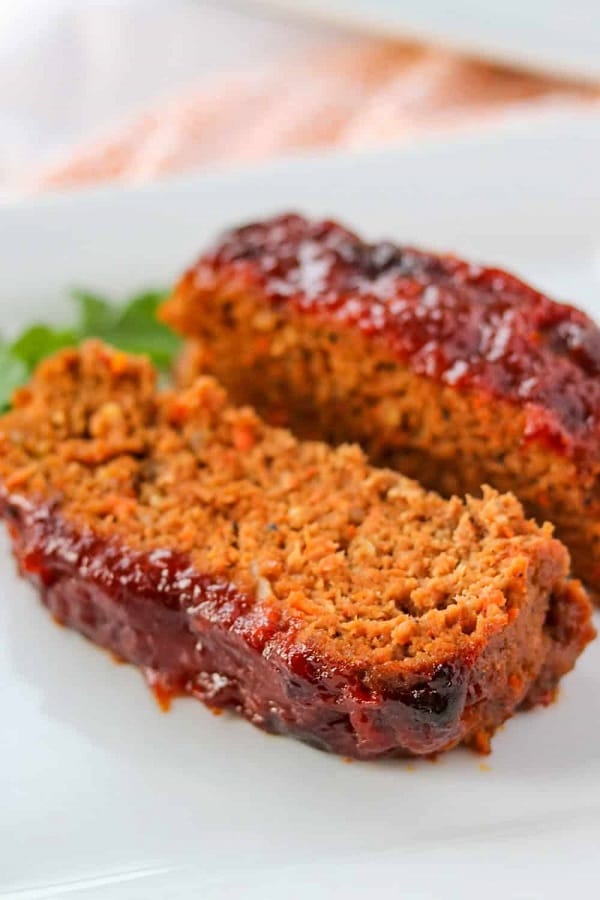
f you want to make a delicious meatloaf for dinner, you may wonder how long it should be baked. It’s recommended to bake a 1 lb meatloaf for about 40 minutes at 375°F and then spread ¼ cup ketchup evenly over the top before baking it again for 15 to 20 minutes. A 2 lb meatloaf should take about 25-30 minutes to bake at 375°F, while a 3 lb meatloaf should be baked for about 1 hour and 20 minutes.
It’s important to check the internal temperature of the meatloaf, which should reach at least 155°F before it’s pulled from the oven. Additionally, after baking, it’s recommended to let the meatloaf sit for about 10 minutes so that it can reabsorb any juices.
Should You Let Meatloaf Rest Before Serving, And If So, How Long?
If you’re wondering whether to let your meatloaf rest before serving, the answer is yes, you should. Allowing the meat to rest for 10 to 15 minutes before cutting into it will give the juices enough time to redistribute and settle. This will help ensure your meatloaf is moist, tender, and flavorful. You can use a thermometer to ensure the meatloaf reaches the proper internal temperature and then let it rest on the counter for the desired time. After that, it’ll be ready to serve and enjoy!
What Is The Best Way To Store Cooked Meatloaf?
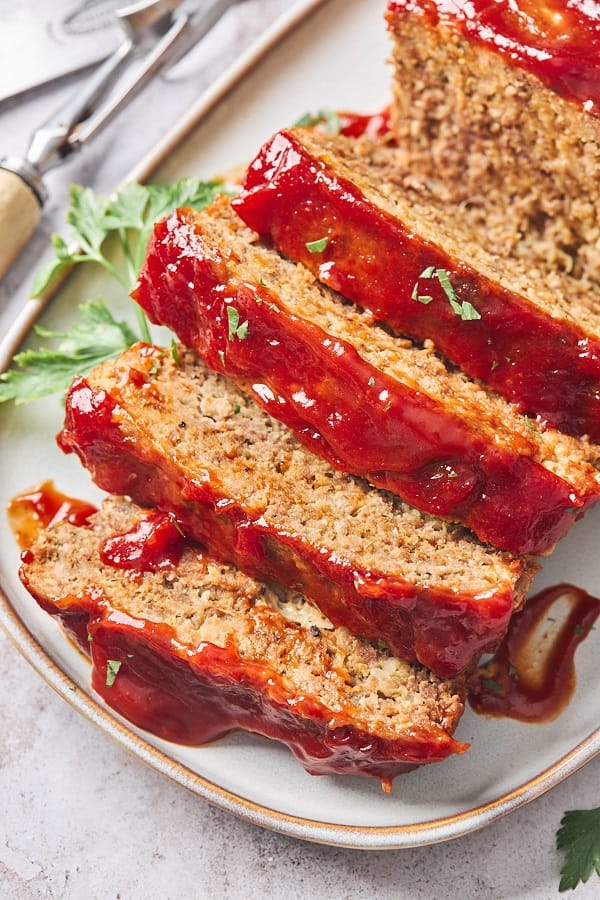
First and foremost, it is essential to let the meatloaf cool down to room temperature before storing it. This helps prevent condensation inside the container and keeps the meatloaf from getting mushy. I usually let it sit for about an hour or so, depending on the size of the meatloaf.
Next, wrap the meatloaf tightly in plastic wrap or aluminum foil. This helps keep it from drying out and prevents any odors from other foods in the fridge from seeping in. If you want to be extra cautious, put the wrapped meatloaf in an airtight container.
Now, you’re ready to store the meatloaf in the fridge. The ideal temperature for storing cooked meat is between 35°F and 40°F, so make sure your fridge is set to this range. I usually store my meatloaf on the middle or bottom shelf, where the temperature is more consistent and is less likely to get bumped around.
If you plan to store the meatloaf for more than a couple of days, you can freeze it. To do this, wrap the meatloaf tightly in plastic wrap and then aluminum foil, removing as much air as possible. Write the date on the foil to know when it was made, then place it in the freezer. The meatloaf should last for up to three months in the freezer.
When it comes time to reheat the meatloaf, it is important to do so correctly to avoid any foodborne illnesses. The best way to reheat meatloaf is in the oven at a temperature of 350°F. Depending on the size of the meatloaf, it may take anywhere from 20 to 45 minutes to fully heat through.
FAQs About Do You Cover Meatloaf When Baking
When Do You Not Cover Meatloaf?
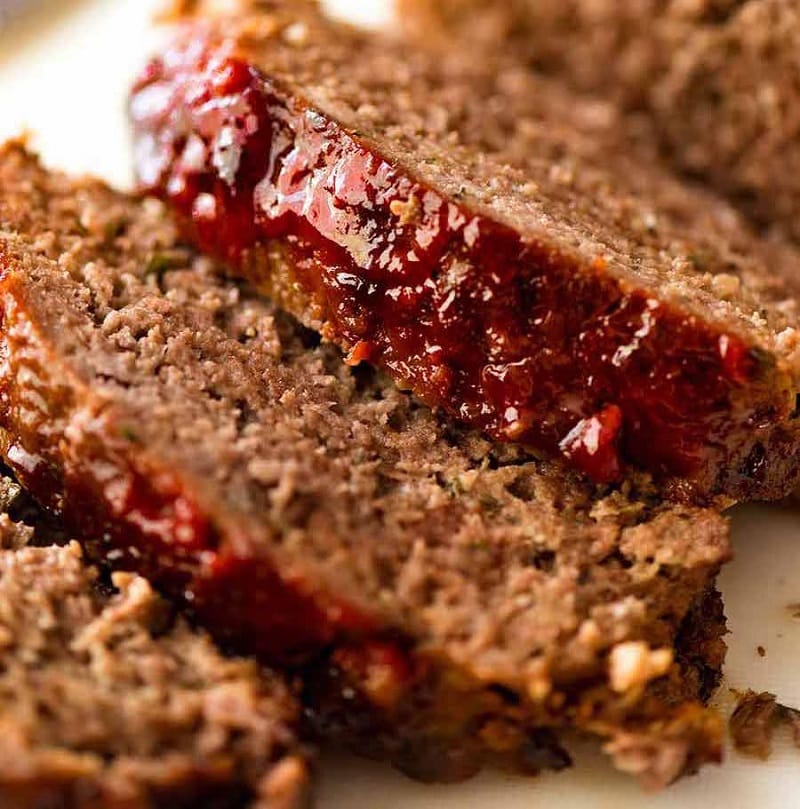
Covering meatloaf with a lid or aluminum foil is often the go-to approach to ensure a moist and flavorful dish. However, there may be instances when you do not need to cover your meatloaf. For example, if you prefer a crispy exterior, leaving the meatloaf uncovered for the entire cooking time can achieve this.
Additionally, if your meatloaf is small and placed in individual portions, such as muffin tins, covering it may not be necessary as it will cook through evenly without drying out. Lastly, if you plan to serve your meatloaf with some sauce or gravy, leaving it uncovered during the last few minutes of cooking can help thicken the sauce and provide a nice caramelized crust on top.
Are There Any Specific Ingredients Or Seasonings That Can Help Boost The Flavor Of Meatloaf?
If you want to add some extra flavor to your meatloaf, various ingredients and seasonings can help.
For example, a combination of olive oil, parmesan cheese, fresh basil, and pine nuts can add a fattiness that seals in moisture. Paprika, ground coriander, cumin, garam masala, and cayenne can give a slightly spicy kick. Oregano brings a woodsy, savory flavor that pairs well with meat. Adding minced garlic, parsley, and thyme can provide a strong, savory taste.
Worcestershire sauce, Dijon mustard, and BBQ sauce can each add unique flavors to your meatloaf. Tomato sauce or marinara can also add flavorful depth to your meatloaf. Using lean ground beef and plenty of binding ingredients such as eggs and seasoned breadcrumbs can help keep your meatloaf moist and flavorful.
Overall, many specific ingredients and seasonings can help boost the flavor of meatloaf.
When And Why Should Meatloaf Be Uncovered During The Baking Process For Browning?
When making meatloaf, there are different opinions on whether or not it should be covered during baking. Some recipes call for covering the meatloaf with foil towards the end of the cooking time, while others advise not to cover it at all.
However, it’s best to bake the meatloaf uncovered in the oven if you want a browned and crispy top. This will allow the top to brown nicely and create a delectable crust. Additionally, if the meatloaf is browning too quickly on the outside, it may be a good idea to cover it with aluminum foil during cooking to prevent burning. Always use a meat thermometer to ensure that the loaf is cooked to completion, and enjoy your perfectly browned and juicy meatloaf.
Is It Better To Cook Meatloaf At 350 Or 375?
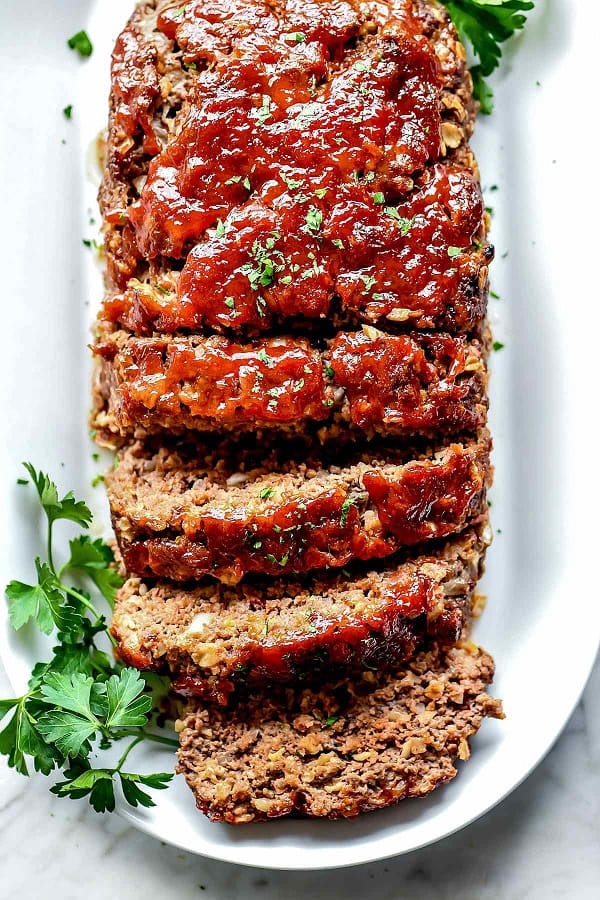
When cooking meatloaf in the oven, the ideal temperature range is between 350°F and 375°F. This temperature range ensures the meatloaf cooks evenly and doesn’t dry out. It’s important to note that the cooking time will vary depending on the size of the meatloaf. A good rule of thumb is to cook the meatloaf for 35 to 45 minutes per pound at 375°F or 45 minutes to an hour at 350°F. It is always best to use a meat thermometer to ensure that the internal temperature of the meatloaf reaches 160°F. This temperature ensures that the meatloaf is fully cooked and safe to eat.
While there may be slight differences between cooking at 350°F and 375°F, the most important thing is finding the best temperature for your particular recipe and producing the tastiest results.
Should Meatloaf Be Cooked In Glass Or Metal?
When it comes to baking meatloaf, there are a variety of pans to choose from, including glass and metal. Glass pans are great insulators, but they tend to absorb heat quickly, resulting in quicker cooking times. On the other hand, metal pans are conductors and can withstand higher temperatures, resulting in even browning.
So, should meatloaf be cooked in glass or metal? It depends on personal preference and the desired outcome. A glass pan might be the way to go if you prefer a faster cooking time and a softer texture. A metal pan would be better if you want a crisp exterior and an even cook.
Is It Better To Bake In Foil Or Glass Pans?
Foil pans are great for convenience and easy cleanup, but they can be flimsy and may not provide the best heat distribution. Glass pans, on the other hand, are heavier and more durable. They may take longer to heat up, but once they do, they retain heat for longer and tend to cook food more evenly. Additionally, glass pans absorb heat quickly, resulting in quicker cooking times. So, while both options have pros and cons, depending on the recipe and desired outcome, a glass pan may be the better choice for baking.
Conclusion
Ultimately, you choose to cover your meatloaf when baking comes down to your preference and the recipe you’re using. So, whether you cover it or not, keep an eye on the dish and adjust the cooking time to ensure it’s perfect.
In conclusion, the question of whether to cover meatloaf when baking is common, but the answer isn’t always straightforward. It depends on the recipe and your personal preference. So, if you’re unsure, don’t be afraid to experiment and find out what works best for you.
References:
- https://www.thespruceeats.com/secrets-to-perfectly-moist-meatloaf-101531
- https://www.tastingtable.com/963433/why-you-should-always-let-meatloaf-rest-before-serving/
- https://www.courant.com/1997/12/17/simple-old-standby-meatloaf/
- https://izzycooking.com/meatloaf-internal-temperature/

Hey readers! Chip Holland here, and I’m a Manager of this website. My passion for writing about it only matches my passion for BBQ. Follow my blog for mouth-watering recipes, tips, and tricks for the perfect smoke, grill, and BBQ. I’m sure you won’t be disappointed!
